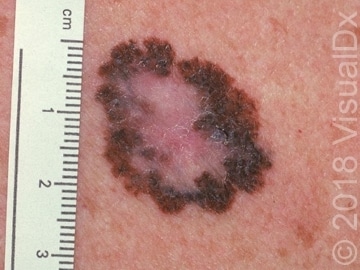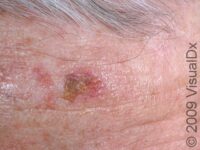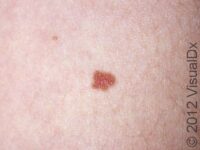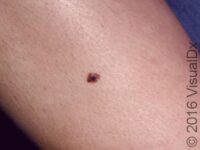Most people have heard that wearing sunscreen is important, but not everyone knows the long-term effects of too much sun exposure. Too much unprotected sunshine can lead to both cosmetic and medical issues later on. The ultraviolet rays from the sun have an extraordinary ability to speed up the natural aging process as they penetrate your skin and damage your cells. From the outside we can see this damage as leathery tight skin, wrinkles, and sun spots. While these signs of skin damage can be distressing for patients, the real worry from this damage is skin cancer.
The most important risk factor for developing skin cancer is the amount of unprotected sun exposure in a person’s lifetime. Basal cell carcinoma (BCC) and squamous cell carcinoma (SCC) are the most common skin cancers, with over 5 million treated each year in the United States. These skin cancers can appear on any area of skin, but are most common on sun-exposed areas like the head, neck, and arms. Although BCC and SCC are very common, the good news is that they don’t typically spread to other parts of the body and aren’t commonly fatal.
However, there is another more dangerous type of skin cancer called melanoma that can spread quickly and is deadly if left untreated. Melanomas come from specialized cells called melanocytes that normally give skin its pigment. These melanocytes are spread out among normal skin cells and sometimes form clusters of cells, which we see as moles from the outside. When these normal melanocytes start to undergo changes (what doctors call dysplasia), they can grow uncontrollably and turn into a malignant melanoma skin cancer.
Since both moles and melanoma come from melanocytes, how can you tell the difference between a normal mole and a melanoma? Fortunately, dermatologists spend years in training to learn how to recognize and treat skin cancers, and vigilant patients can play an important role by noticing new or changing spots that pop up between visits. Doctors have come up with the acronym ABCDE to help patients recognize moles that could be on their way to becoming a malignant melanoma.
A is for Asymmetry. Do both halves of the mole look the same or different? Normal moles tend to be circular or oval with similar-looking halves, while melanoma often has variations.
B is for Border. Is the border smooth and circular, or is it jagged or curved like a puzzle piece? Most moles will have distinct well-circumscribed borders, while a melanoma can often have a squiggly or uneven border.
C is for Color. How many colors are present in your mole? If it’s only one shade of brown, that’s less concerning than a mole with brown, black, and tan, or any combination of more than one color or shade.
D is for Diameter. How big is your mole? Generally speaking, smaller moles are less likely to be cancerous than larger moles, but the truth is that melanoma can come in all shapes and sizes. Most normal moles are small enough to fit under the head of a pencil eraser.
E is for Evolution. Has a new or old mole been changing? This is by far the most important letter of the ABCDEs. If you’ve had a mole for decades and it’s never grown or changed, it’s less likely to be a melanoma. However if a new mole popped up more recently and has become larger, changed color, or grown in an irregular pattern, there’s more of a chance that it could be melanoma.
This image of a melanoma demonstrates several features of the ABCDEs. We can see that this melanoma is asymmetrical, has irregular borders and multiple colors present, and is definitely wider than the head of a pencil. A careful history would also reveal evolution over the past weeks and months.
While dermatologists can professionally check your skin for cancer when they see you in the clinic, it’s up to you to check for suspicious spots in between visits. Melanoma claims almost 10,000 lives every year, but when caught early it has a 98% survival rate. Protecting yourself from the sun decreases your risk of developing melanoma in the first place, and checking your skin frequently using the ABCDEs can improve your odds of surviving if a melanoma does develop. One final word of advice, remember to check the areas of your body that you don’t often see like your back, your legs, and the soles of your feet and be sure to have your dermatologist examine any suspicious lesions.
Source: https://www.skincancer.org/ski…
Michael Ryan is a medical student at the University of Texas Medical Branch interested in dermatology. He enjoys working as a medical volunteer and giving presentations at local schools about sun protection.
Last modified on December 9th, 2022 at 9:11 pm





